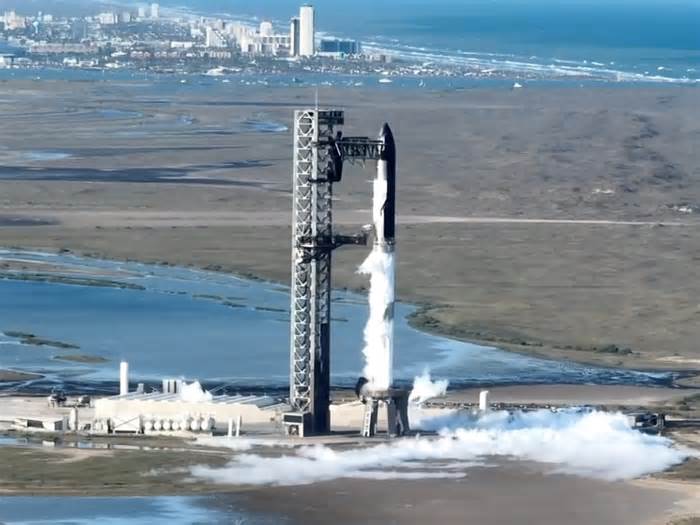
Tesla's Momentum Has Reached Unstoppable Territory - Escape Velocity
- by Torque News
- Nov 11, 2024
- 0 Comments
- 0 Likes Flag 0 Of 5

Tesla has reached escape velocity in multiple ways. This simply means that Tesla is so far ahead in a few areas, that it's going to be impossible for others to catch up. Here are the ways in which Tesla has reached unstoppable territory - and the market seems to agree.
In the high-stakes race towards autonomous driving technology, Tesla has not just entered the competition; it has set a new pace, potentially achieving what could be described as "escape velocity" with its Full Self-Driving (FSD) technology.
This development signifies more than just an incremental step in automotive technology; it heralds a seismic shift in how we view transportation, particularly in the ride-sharing sector. Here's how Tesla is positioning itself to capture a significant portion of the global autonomous ride-share market:
1. Technological Breakthroughs
Tesla's FSD system has undergone significant enhancements, with recent updates like the end-to-end highway driving stack marking a milestone in autonomous technology. This system integrates city and highway driving capabilities, reducing the need for human intervention dramatically.
Reports from Tesla enthusiasts and analysts on X have highlighted that the latest versions of FSD have shown a fourfold increase in miles between interventions compared to previous iterations, indicating substantial progress towards full autonomy.
2. Data-Drive Development
Tesla’s unique approach leverages the vast amount of data collected from its global fleet, which now includes over a million vehicles. This real-world data is invaluable for training neural networks, allowing the FSD system to learn from a variety of driving scenarios worldwide.
Unlike competitors who rely heavily on simulation or smaller, more controlled datasets, Tesla's live data collection provides a robust foundation for refining its AI models, making its system more adaptive and reliable across different environments.
3. Regulatory and Market Expansion
Tesla's presence in China, the world's largest automotive market, and its compliance with local data security requirements, as recently affirmed by a top Chinese auto association, positions it well for the global rollout of FSD.
The potential approval for data transfer overseas could further enhance Tesla's AI capabilities by incorporating diverse driving behaviors into its training datasets. This regulatory progress is crucial for Tesla to deploy its FSD capabilities on a global scale, especially in markets like China, where there is a high demand for advanced driver assistance systems.
4. Economic Implications
Analysts, such as those from ARK Invest, have projected that Tesla's driverless ride-hailing service could tap into an $11 trillion revenue potential, far exceeding current ride-hailing market sizes.
This estimation is based on Tesla's ability to convert a large portion of its vehicle fleet into autonomous ride-sharing units, which not only reduces operational costs significantly but also increases the efficiency and accessibility of transportation services.
5. Consumer Adoption and Brand Trust
Tesla has cultivated a strong brand loyalty and a community of early adopters who are keen on embracing new technology. The ongoing updates via over-the-air (OTA) software enhancements keep Tesla owners engaged and improve the vehicle's autonomous capabilities without needing physical upgrades.
This continuous improvement model not only keeps Tesla vehicles at the forefront of technology but also builds consumer trust in the brand's autonomous driving promises.
6. Challenges and Criticisms
Despite these advancements, Tesla's path hasn't been without hurdles. Critics argue that FSD, while advanced, is not truly autonomous as it still requires active driver supervision, placing it at Level 2 autonomy rather than the aspired Level 5.
Safety concerns, legal challenges, and regulatory scrutiny, especially in the U.S., have also been significant - in the past. With a new political landscape ahead for the next four years, these challenges will likely be a distant memory.
7. The Future Landscape
The inevitability of Tesla capturing a significant share of the autonomous ride-share market hinges on several factors, including continued technological refinement, regulatory successes, and the company's ability to scale its operations.
If Tesla can maintain its current trajectory, the vision of a global network of Tesla robotaxis becomes not just feasible but potentially dominant, reshaping urban mobility and challenging existing ride-sharing giants like Uber and Lyft.
Tesla's Full Self-Driving technology, with its current trajectory and strategic market positioning, is on course to redefine the future of transportation.
By achieving what can be seen as escape velocity in autonomous driving technology, Tesla is not just aiming to be a part of the ride-share market; it's preparing to lead it, potentially turning every Tesla into a revenue-generating asset and setting a new standard for what automotive companies can achieve in the autonomous era.
Tesla is betting big with AI and autonomy - both with vehicles and the humanoid robot. These big bets may payoff far more than any can imagine in the future.
Has Tesla reached escape velocity with FSD? Or is it simply a driver assist program with many more years ahead of it to become autonomous?
Share this article with friends and family and on social media - or leave a comment below. You can view my most recent articles here for further reading. I am also on X/Twitter where I post more than just articles daily, as well as LinkedIn! Thank you so much for your support!
Please first to comment
Related Post
Stay Connected
Tweets by elonmuskTo get the latest tweets please make sure you are logged in on X on this browser.
Sponsored
Popular Post
Tesla: Buy This Dip, Energy Growth And Margin Recovery Are Vastly Underappreciated
28 ViewsJul 29 ,2024






 Energy
Energy



















